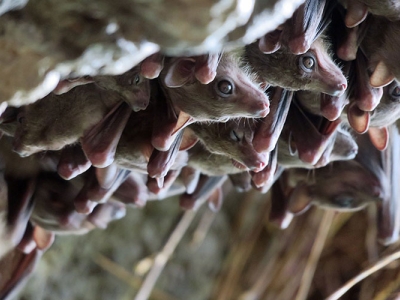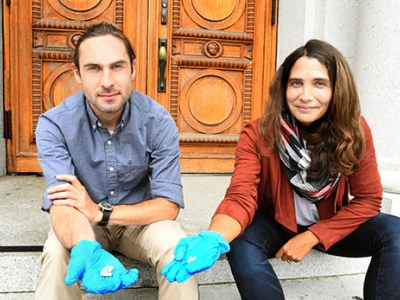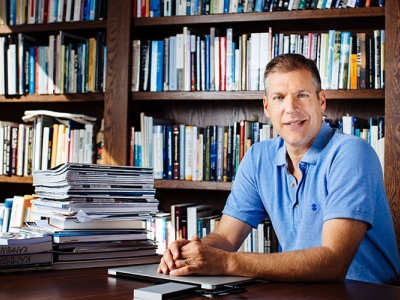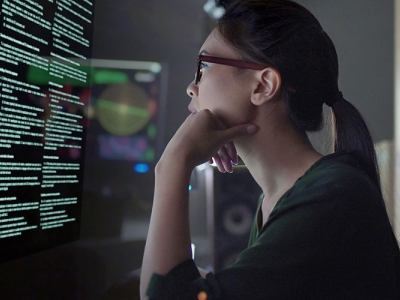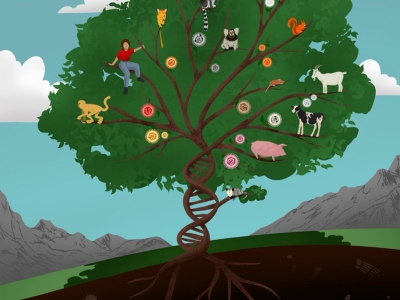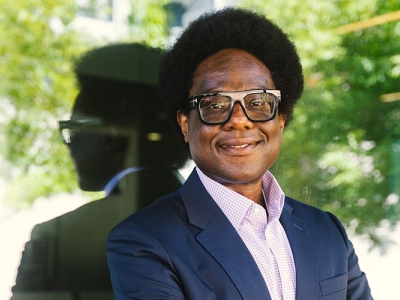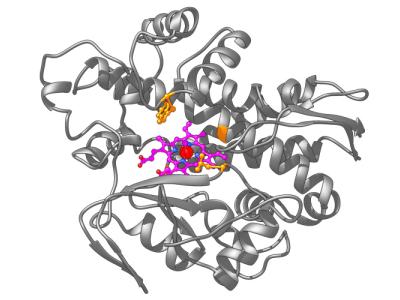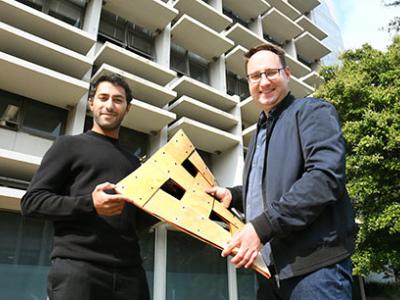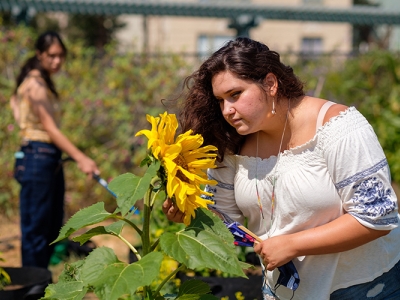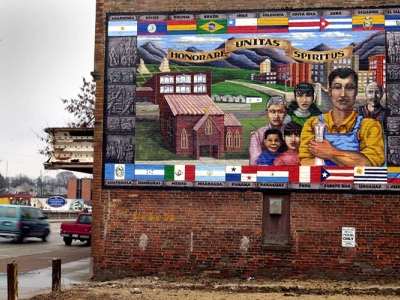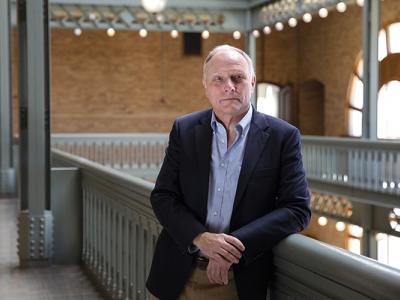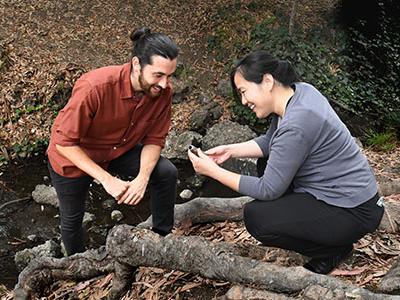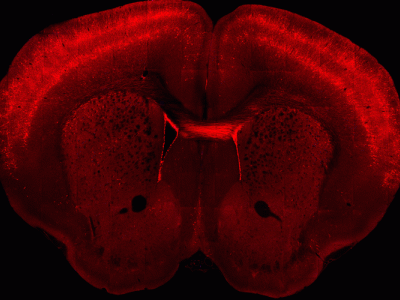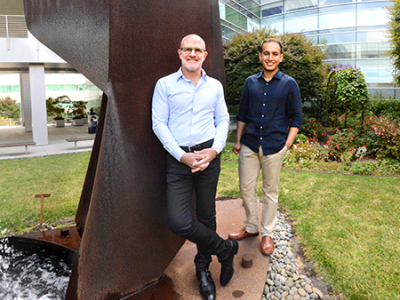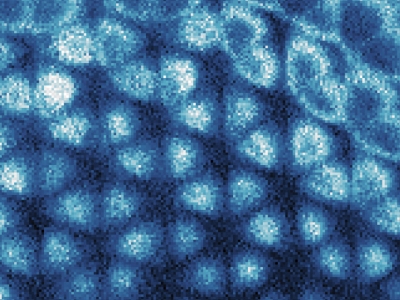Whether chatting with friends at a dinner party or managing a high-stakes meeting at work, communicating with others in a group requires a complex set of mental tasks. Our brains must track who is speaking and what is being said, as well as what our relationship to that person may be — because, after all, we probably give the opinion of our best friend more weight than that of a complete stranger. A study published today in the journal Science provides the first glimpse into how the brains of social mammals process these types of complex group interactions.
Research News
Learn more about UC Berkeley's researchers and innovators.
Showing 897 - 912 of 3459 Results
More than 40 million MRI scans are carried out every year in the U.S. In about one out of three, patients get an infusion containing the metal gadolinium as a contrast agent to improve imaging.
Because contrast MRIs sometimes lead to potentially life-threatening complications, the FDA issued a warning against contrast MRIs for patients with kidney disease. Rebecca Abergel studies the chemical biology of metals, with a research focuses on organic molecules that can sequester and eliminate metals in the body, a chemical process known as chelation. She is using her Bakar Fellow support to evaluate the effectiveness of a chelating drug she has developed.
UC Berkeley professor Daniel Kammen has been selected to serve as senior adviser for energy, climate and innovation for the U.S. Agency for International Development (USAID), the agency announced this week.
The University of California, Berkeley, and the University of California, San Francisco, today (Oct. 20, 2021) jointly launched a new, one-of-a-kind program in computational precision health, a significant step toward advancing this new field and, ultimately, improving the quality and equity of health care.
A new study led by researchers at University of California, Berkeley, and Washington University explored the function of one component of this junk DNA, transposons, which are selfish DNA sequences able to invade their host genome. The study shows that at least one family of transposons — ancient viruses that have invaded our genome by the millions — plays a critical role in viability in the mouse, and perhaps in all mammals.
The National Academy of Medicine announced today that UC Berkeley law professor and bioethicist Osagie K. Obasogie will be among 100 new members elected to join its ranks this year.
A collaboration between synthetic chemists and synthetic biologists at the University of California, Berkeley, and Lawrence Berkeley National Laboratory has now overcome that hurdle, engineering bacteria that can make a molecule that, until now, could only be synthesized in a laboratory.
As the earth’s climate warms, residents of affluent nations will find some relief with air conditioning, but people in lower-income countries may have to pay vastly more for electricity or do without cooling, says a new study co-authored at the University of California, Berkeley.
More than a billion people around the world – hundreds of millions of families – can’t afford secure housing. Researchers project the housing gap will nearly double within a decade.
Simon Schleicher is part of a new generation of architects and engineers developing novel designs and construction technologies to ramp up production of affordable homes. The Bakar Fellows program supports his research to advance the use of 3D printing in home construction.
There’s a new garden at UC Berkeley, but for Adina Lewis and other Indigenous people in the campus community, it’s much more than flora and fauna. The Indigenous Community Learning Garden is a place where both they and native plants can connect and thrive.
UC Berkeley ethnic studies professor Laura E. Pérez believes using Latinx — the gender-neutral term for Latina or Latino — can help bring unknown Latinx stories and experiences to the forefront. While the word challenges gender binaries in the Spanish language, Pérez said, in use, Latinx also encourages discussions around cultural and racialized diversity and inclusivity.
David Card, a labor economist and professor of economics at the University of California, Berkeley, has won the 2021 Nobel Memorial Prize in Economic Sciences for work that challenged orthodoxy and dramatically shifted understanding of inequality and the social and economic forces that impact low-wage workers.
The United States is facing a serious public health problem from lead contamination of drinking water, especially in rural areas and large cities where efforts to replace aging water service lines has lagged. Bakar Fellow Baoxia Mi believes she and her research group have found a solution. An expert on advanced membrane processes and nanotechnology, Mi has focused her research on addressing the challenges to maintaining a healthy and sustainable water supply, including in addition to drinking water quality, desalination, wastewater reuse, renewable energy production, and public health protection.
When you clicked to read this story, a band of cells across the top of your brain sent signals down your spine and out to your hand to tell the muscles in your index finger to press down with just the right amount of pressure to activate your mouse or track pad.
A slew of new studies now shows that the area of the brain responsible for initiating this action — the primary motor cortex, which controls movement — has as many as 116 different types of cells that work together to make this happen.
Netherton Syndrome is a rare, genetic skin disease that can be fatal to neonatal patients. It's caused by a mutation in a gene for an enzyme known as LEKTI. There is no cure. With support from the Bakar Fellows Program, bioengineer Jay Keasling aims to employ a harmless bacterium to deliver the LEKTI enzyme that Netherton children lack, restoring the natural cycle that assures healthy skin and giving them a chance for a normal life.
More than 90 years ago, physicist Eugene Wigner predicted that at low densities and cold temperatures, electrons that usually zip through materials would freeze into place, forming an electron ice, or what has been dubbed a Wigner crystal.
While physicists have obtained indirect evidence that Wigner crystals exist, no one has been able to snap a picture of one — until now.
UC Berkeley physicists published last week in the journal Nature an image of just such an electron ice sandwiched between two semiconductor layers. The image is proof positive that these crystals exist.

